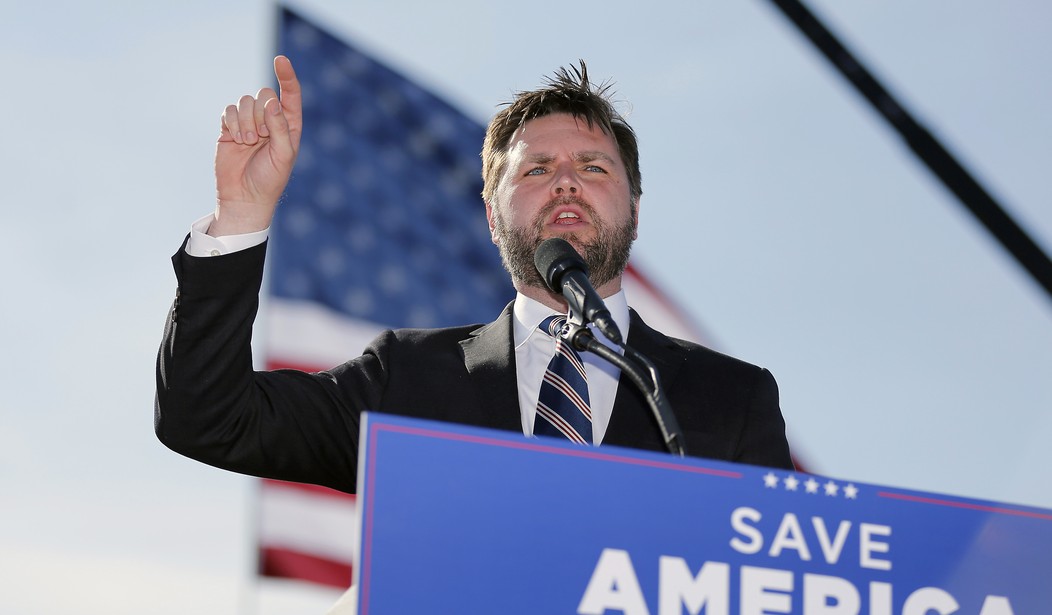Here’s the flip side to yesterday’s post. On the one hand, Dems are showering cash on candidates who are all but certain to lose. On the other hand, Republicans *aren’t* showering cash on candidates with good chances to win.
Why not?
Flipping the Senate should be a top priority for GOP voters, no? Even with the House all but certain to end up in Republican hands, control of the upper chamber would give the party veto power over presidential nominees in the final two years of Biden’s term. And if Republicans are to have any shot at a filibuster-proof Senate majority in 2025 — which isn’t out of the question given how difficult the map is for Dems in 2024 — they need to flip as many winnable seats this year as possible.
That’s a strong motive to donate. So why are the gaps in swing-state fundraising so large?
Warnock $17.2M … Walker $6.2M
Ryan $9.1M … Vance $2.3M
Cortez Masto $7.5M … Laxalt $2.8M
Incumbents (almost) always raise more money, but it’s the cavernous gaps btw these candidates Q2 $$$ that is eye 👁 catching #GASEN #OHSEN#NVSEN
— David Catanese (@davecatanese) July 15, 2022
It gets worse. In Arizona, the leader in the GOP primary, Blake Masters, raised less than a million bucks this quarter. Democrat Mark Kelly raised $13.6 million. In Pennsylvania, John Fetterman raked in $11 million versus $3.8 million for Dr. Oz, more than half of which came from Oz’s own bank account. Republicans are simply getting creamed in the money race.
To which one might reasonably respond: So?
After all, one of the subplots of the 2020 election was Democratic Senate candidates raising stupendous sums of money and then losing to Republicans anyway, in many cases badly. When Beto O’Rourke set a then-record for Senate fundraising in 2018, he at least gave Ted Cruz a scare in the general election that fall. Most of the Dems who raised mountains of cash two years later got trounced. Sara Gideon took in nearly $75 million, an amount so huge she ran out of ways to spend it. She lost by nearly nine points. Jaime Harrison set a new American record in South Carolina with $130 million banked, and lost by 10. In Kentucky, Amy McGrath felt just shy of $100 million raised and then fell short of victory by, uh, 19 points.
Angry liberals emptying their wallets to boost longshot candidates against Republicans they hate (Susan Collins, Lindsey Graham, and Mitch McConnell, respectively, in the previous examples) and then getting blown out anyway has become a venerable modern American tradition. Given the pro-Republican mood of the electorate, there’s good reason to believe that tradition will continue this fall.
But there’s also reason to think it won’t. Collins, Graham, and McConnell had something important that Walker, Vance, Laxalt, Masters, and Oz all lack — incumbency. Universal name recognition. A track record of achievement for their states. Graham and McConnell also had the good fortune to be running in solid red states. Of the five GOP candidates struggling with fundraising this year, only Vance has that advantage over his opponent.
Vance and Masters also have the good fortune to be sponsored by a billionaire patron. They’re Peter Thiel’s boys, which means their Super PACs have access to essentially unlimited funding to pick up the slack from their campaigns. But what about the other Republican candidates who need financial help? Why is there such a chasm between them and the Democrats?
A few theories:
1. As the GOP becomes more of a working-class party, it stands to reason that small-dollar donations might dry up in a period of high inflation. In fact, that was one explanation given to WaPo by sources for why even Trump’s fundraising slowed down a bit in the first six months of the year. The first half of 2022 was the first time since leaving office that he failed to raise $50 million in a six-month stretch, in fact.
But that explanation only goes so far. Dem candidates have plenty of small donors too, after all, who are also feeling pinched by inflation. Yet Stacey Abrams has raised more than 10 times as much from small donors as Brian Kemp has. And Trump’s fundraising fall-off may have less to do with inflation than with his donors shifting their allegiance to the new guy: Ron DeSantis raised $45 million in the first half of 2022, outpacing even the Great MAGA King.
2. GOP donors are already looking ahead to 2024. Democrats have the luxury of controlling the White House and can focus their exclusive attention on the midterms. Republicans may be distracted by the rise of DeSantis, the prospect of a 2024 primary battle with Trump, and their burning desire to oust Joe Biden from the presidency. How much of that $45 million that went to DeSantis might have otherwise gone to figures like Vance and Walker if not for the governor’s ascendance as a national figure and potential leader of the party?
3. Dems have a built-in fundraising advantage this cycle because so many of their candidates are incumbents. That’s terrible news for them on balance inasmuch as it means they’re forced to defend Senate seats in an inhospitable national environment, but the silver lining is that it’s great for raking in the dough. Sitting senators obviously have extensive connections in their parties plus a donor base left over from their previous campaigns. It’s easier for Catherine Cortez Masto to dial up cronies and ask for cash than it is for Adam Laxalt to do so.
And of course, incumbents rarely have to worry about contested primaries. Figures like Vance and Masters either have endured or are still enduring embittering intraparty contests. The resulting hard feelings among those who supported their losing opponents may have led them to keep their wallets closed for the general election for the time being.
4. The Roe factor. It can’t be a coincidence that Democratic candidates are raking it in just weeks after liberal groups like ActBlue and Planned Parenthood reported massive donation surges in the wake of the Dobbs ruling. “The DSCC also marked its best day of online fundraising this cycle after the decision, per a committee aide, while the DCCC saw its largest day of digital fundraising this cycle,” Politico reported in late June about the aftermath of the decision.
The timing here is tricky, though, as Dobbs was handed down a week before the end of the second quarter. Even if Dem candidates saw a burst in fundraising afterward, only one week’s worth of that burst is showing up in the latest fundraising reports. On the other hand, the leak of Alito’s draft opinion came at the start of May, an early alert to liberals that abortion rights were likely doomed. Maybe that set off a frenzy of giving in the second quarter that finally reached its apex when the decision was announced.
5. Big Republican groups are sucking up funds that might otherwise have gone to GOP candidates. The NRSC has raised $173 million this cycle while McConnell’s Senate Leadership Fund PAC is sitting on more than $100 million in cash. Those funds will end up being spent to boost figures like Vance and Walker. In other words, maybe many conservative donors aren’t giving to individual campaigns because they’re already tapped out from giving to umbrella orgs that’ll help those campaigns anyway.
I’ll leave you with this from a Democratic analyst as a reminder not to take the red tsunami for granted. His numbers don’t match the RCP generic ballot average, which still has Republicans ahead by almost two points. But the risk of a post-Roe backlash shouldn’t be dismissed.
There here have been 14 independent polls taken since Roe ended, and the in those polls Dems now hold a 44.2 to 41.7 lead, 2.5 pts. That's a 4-5 pt swing towards Democrats in recent weeks.
It's a competitive not a wave election now. 1/https://t.co/gSRnhzOP6v
— Simon Rosenberg (@SimonWDC) July 16, 2022







Join the conversation as a VIP Member